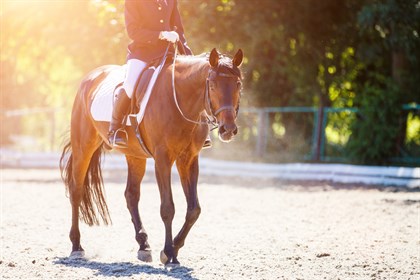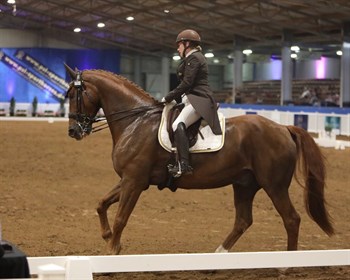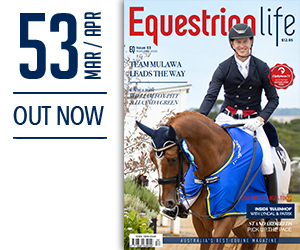|
This article has appeared previously with Equestrian Life. To see what's in our latest issue, click here.

By Kerry Mack
At Mayfield Farm we have a few guiding principles. I would like to make one of these the theme for the blog this year and keep coming back to how this principle informs choices we make when training.
“CAUSE THE WRONG THING TO BE DIFFICULT AND THE RIGHT THING TO BE EASY”.
This is a famous quote from American master horseman Ray Hunt (1929-2009). One of the grandfathers of the whole progression towards humane training of horses was Tom Dorrance (1910-2003). He was the mentor of Ray Hunt, who was in turn a major influence on Buck Brannaman and “natural horsemanship”. Tom Dorrance and his brother Bill promoted the idea of a partnership between horses and riders, rather than a relationship built on dominance. This approach of allowing the horse to choose to do the “right “ thing is relevant to training horses in all disciplines at all levels. It is not just for horse breakers (to use the old fashioned terminology). It also resonates with the words of Tom Roberts, about whom I have written before.
Ray Hunt was against making training a contest. He said “a horse doesn't know what a contest is until the human shows him”.
Let me give you a simple example from todays work at Mayfield. No matter what your discipline, dressage, polo, jumping, we all ask our horses to lengthen the canter and come back again to a more collected canter. Most horses will willingly lengthen the canter once they understand to go forward from the leg. Of course it takes training to get them to be able to do this in the uphill balance we want of an advanced horse. We put the leg on and allow the horse to go more forward with a slight softening or opening of the rein. But today we were working on coming back from the extended canter. We want the horse to stay in self carriage. We want him to shorten the stride, stay in balance. We want him to shorten the stride and his body without relatively shortening his neck i.e.the action of the rein must go through the body of the horse just as Podjahsky (Spanish Riding School Director) recommends. One way to explain this clearly to the horse is to extend the canter then when you want him to shorten first ask with your body by leaning back a little, sit a little heavier and stop allowing our pelvis to canter with the canter of the horse. Then ask with the rein, and then turn him onto a small circle. The circle must be small enough that in order to keep his balance he must shorten the canter with his weight on the hind leg, but not so small that he can only turn by propping on the front legs. Don't make it like a hand brake turn in the car. A too small circle could result in injury to the horse or even a fall if he loses his balance. A circle about 10-12 meters diameter should do the job. Don’t fight him with the rein, don't wrangle him back to the collected canter. Don't MAKE him come back. This exercise will CAUSE the right thing to be easy, the right thing being that he comes back to the collection in self carriage and balance, from a light rein aid. The wrong thing will be difficult, namely continuing to gallop along in an extended canter. He really will struggle to stay in the extended canter if he turns onto a small circle. A few repetitions of this and he will start to anticipate the transition back and balance himself when you first ask him to with your body. You wont need a lot of rein to slow him down.

Kerry Mack and Mayfield Limelight.
© Roger Fitzhardinge?
The transition you achieve will be more balanced than if you just wrangle him with the reins. He will naturally learn to be more collected. Very soon you will find that you don't need the circle and he will collect in self carriage when you ask him with your body.
When he understands this well enough you can use the aid with your body to get the canter more collected i.e. doing transitions from a normal working canter to a collected canter, or work towards the very collected pirouette canter, or canter to walk transitions.
This is one example of using the principle of CAUSE THE WRONG THING TO BE DIFFICULT AND THE RIGHT THING EASY. I hope to give you more throughout the year.
Have fun,
Kerry Mack
READ THE LATEST NEWS ARTICLES HERE

|

